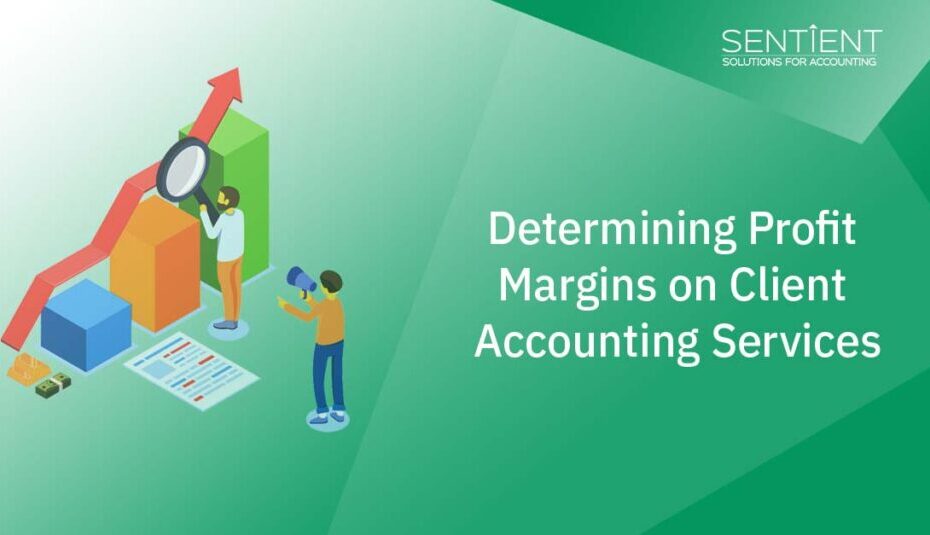The world of accounting is evolving at a frenzied pace. Research shows that client accounting services, tax preparation, bookkeeping, and payroll services were the most profitable small business industry in 2021, as measured by a net profit margin of 19.8%.
If the focus of a CPA firm isn’t the profit margin, then you are doing yourself a disservice and limiting the amount of value you bring to your clients.
A critical component of healthy financial management is knowing and understanding your profit margins. For CPA firms, determining profit margins requires looking into the behind-the-scene factors which are often intangible and qualitative factors. The idea is to calculate whether your business is really getting a good ROI or not.
What are the variables in calculating the profit margin?
1) Determine the actual time and cost of resources required/spent on the service
It is very easy to overestimate or underestimate the time taken to complete certain tasks within a project. It is necessary to get an accurate sense of how much time is required and the resources needed for each task.
This can be simplified by using time tracking software. These, when integrated with your project management applications, provide valuable insights into figuring out how long your client accounting services firm takes to perform specific services.
In addition, it is possible to calculate the productivity levels of your employees. In the long run, when you are aware of exactly how much time to allocate for specific services, estimating project costs becomes easier.
2) Taking the experience of service provider into account
Expertise and proficiency will inevitably vary across your employees. For instance, a CPA who has been with your company for a decade commands a higher rate than a junior CPA who joined a few weeks back. It is necessary, therefore, to take into account the differences in hourly rates when a project or task requires the expertise of a senior employee.
While individual contributions of employees may vary on a day-to-day basis, calculating an average hourly rate for them is important. This is particularly helpful when figuring out the overhead cost of a project by keeping the figures and time taken as close to the real deal as possible.
3) Calculate direct and indirect costs
Calculating hourly rates for your employees isn’t the only thing to deduct from your profit margin unless the goal is gross profit margin numbers. Several other direct and indirect costs also need to be factored in.
For instance, the overhead costs for office space, such as rent, utility bills, cost of technology, and office consumables all factor into your profit margins.
Indirect costs for employees include training, health insurance, and other benefits offered by the organization. Going over the expense categories helps figure out the ones that are applicable to the profit margins of the services offered by your accounting firm.
4) Factor in marketing and advertising
Accounting firms are a highly competitive industry. The key differentiator is customer experience. Understanding the prospective clients’ specific needs and the role social media plays in today’s digital landscape makes professional marketing and personalized communication a necessity.
Apart from this, administrative costs such as getting project specifications, invoicing, and billing all come under overhead and need to be calculated as well. Basically, any tangible/intangible factor that integrates into the overall cost of the product or service offered by your accounting firm needs to be considered.
5) Understand the lifetime value of your customer
Acquiring a new customer can cost 5-25x times more than retaining an existing customer. Maintaining an existing customer is a whole different ball game. Increasing customer retention by 5% can increase profits from 25-95%.
Loyal customers are four times as likely to refer; bringing you new clients with very little additional expense on your part. Factor in each client’s individual contribution to your overall revenue by evaluating their immediate and long-term costs by focusing on referral programs and client accounting services. This significantly improves the accounting firm’s service profit margins.
Client retention rate is one of the most organic ways to calculate how well your accounting firm is doing. To break it down, CPAs with high client retention rates are doing such great work that their clients realize they are much better off with them than without.
Sentient Solutions for Accounting
Looking for help in transforming your accounting firm? Sentient Solutions for Accounting is a one-stop solution when it comes to financing and accounting back-office services. We partner with accounting firms to help them enhance their productivity, efficiency, and profitability. With world-class processes, a highly qualified and experienced team, and Robotic Process Automation in accounting, we are here for you every step of the way. Please feel free to reach out to us in case of any questions.
